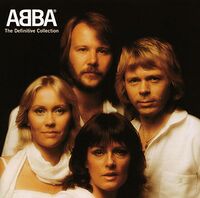Money
Playing quizbowl costs money. This money is used to pay writers, editors, and tournament staff, as well as to cover other costs. This money can be raised by acting in this role or come from outside the community.
Making money
Quizbowl is a game with that provides players with competitive depth and writers with space for both rigor and creativity. As a direct consequence of this, it is a terrible way for the average person to make money. Let's see the numbers.
Set pricing
A typical high school housewrite has a mirror fee of $15-20 a team. Sets intended for lower difficulties tend to be cheaper, while those with harder questions can be up to double the cost. Discounts are often provided for sites which provide complete statistics.
| Set | Season | Difficulty | Base fee | Per team | Cost for a 12 team tournament |
|---|---|---|---|---|---|
| IS sets [1] | 2023-2024 | HS Regular | 50 | 20 | 290 |
| SWAMP [2] | 2023-2024 | HS Regular-minus | 30 | 12 | 174 |
| SCURVY [3] | 2023-2024 | HS Regular-plus | 10 | 120 | |
| DMA [4] | 2023-2024 | HS Regular-plus/Nats-minus† | 20 | 240 | |
| IQBT Regular Season [5] | 2023-2024 | HS Regular | 20 | 240 | |
| Planetfall [6] | 2023-2024 | HS Regular | 17 | 204 | |
| SCOP Novice 13 [7] | 2023-2024 | HS Novice | 12 | 144 | |
| CREEK [8] | 2023-2024 | HS Regular-plus | 20 | 240 | |
| SANDS [9] | 2023-2024 | HS Novice | 15 | 180 | |
| 2022 KICKOFF [10] | 2022-2023 | HS Regular | 17 | 204 | |
| Brooklyn Bridge Battle [11] | 2023-2024 | HS Regular-minus | 15 | 180 | |
| CARD [12] | 2023-2024 | HS Regular | 15 | 180 | |
| QUAOAR [13] | 2023-2024 | HS Novice | 12 | 144 | |
| HFT XV [14] | 2022-2023, 2023-2024 | HS Regular-plus | 20 | 240 |
† - intended for both high school and college mirrors
A typical set has roughly 13 packets of 20/20, plus extra questions.
Case study: OQL
The existence and continued popularity of other trivia formats is a useful point of comparison for the quizbowl community. This example will focus on OQL US (the American branch of the Online Quiz League), which is one of the more popular competitions in the space.
Some important differences which makes OQL significantly more profitable than quizbowl:
- The main audience is adults, whose income allows them to pay significantly more for their hobbies (like trivia).
- Questions categorically do not aim to be pyramidal, which has the effect of making them shorter. The closest comparison in most cases would be a single bonus part.
- The total number of questions is lower, even before accounting for differences in format - 8 directed questions for every member of two teams of four plus four extras is 68 questions a round. Across 11 rounds a season, that makes a total of 748 answers.
- The games are played as asynchronous rounds in online rooms using volunteer readers and scorekeepers; this removes the costs of both hosting and staffing.
- There is a single organization producing questions, meaning that it can take advantage of economies of scale and also concentrate the profits.
The aggregate of these factors is that the writers are writing a smaller number of shorter questions for more money and less overhead.
Some numbers:
- The 11th season of OQL US had 120 teams in 9 divisions. This is on par with a set getting 9 mirrors with 12 teams a piece, which would be quite good for a median housewrite, especially at the college level.
- Week 6 of season 11 of OQL US had an average of about 181 characters per question (12,258 total). For comparison, questions that NAQT intends for middle schoolers are over twice as long and have additional requirements like being pyramidal.
- The base entry fee for OQL is $100 for returning teams - that means the gross take for season 11 was roughly $12,000. The fact that there are no costs associated with hosting means that all of this money also goes to the production team, rather than just the mirror fees.
This boils down to a unsplit rate of $8.90/100 characters, which will ultimately be divided between the writing team and logistics arm of the organization.
